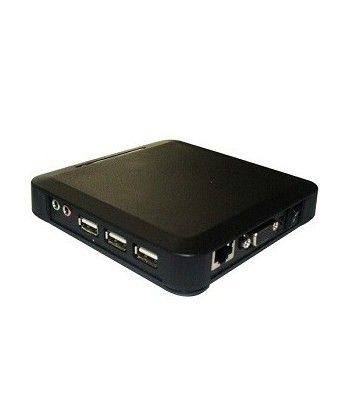
Thin Clients Defined, Explained, and Explored
Thin Client Defined
A thin client is a computer that runs from resources stored on a central server instead of a localized hard drive. Thin clients work by connecting remotely to a server-based computing environment where most applications, sensitive data, and memory, are stored.
What are the benefits of a thin client?
Thin clients have a number of benefits, including:
- Reduced cost
- Increased security
- More efficient manageability
- Scalability
Thin client deployment is more cost effective than deploying regular PCs. Because so much is centralized at the server-side, thin client computing can reduce IT support and licensing costs.
Security can be improved through employing thin clients because the thin client itself is restricted by the server. Thin clients cannot run unauthorized software, and data can’t be copied or saved anywhere except for the server. System monitoring and management is easier based on the centralized server location.
Thin clients can also be simpler to manage, since upgrades, security policies, and more can be managed in the data center instead of on the endpoint machines. This leads to less downtime, increasing productivity among IT staff as well as endpoint machine users.
In what ways can thin clients be used?
There are three ways a thin client can be used: shared services, desktop virtualization, or browser based.
With shared terminal services, all users at thin client stations share a server-based operating system and applications. Users of a shared services thin client are limited to simple tasks on their machine like creating folders, as well as running IT-approved applications.
Desktop virtualization, or UI processing, means that each desktop lives in a virtual machine, which is partitioned off from other virtual machines in the server. The operating system and applications are not shared resources, but they still physically live on a remote server. These virtualized resources can be accessed from any device that is able to connect to the server.
A browser-based approach to using thin clients means that an ordinary device connected to the internet carries out its application functions within a web browser instead of on a remote server. Data processing is done on the thin client machine, but software and data are retrieved from the network.
Thin clients versus fat clients
A “fat client” refers to a typical personal computer/CPU that does all its own data processing. Fat clients are more difficult to secure and manage, costlier to deploy, and can consume a great deal of energy. They are made up of more hardware than thin clients, but also typically have more features.

